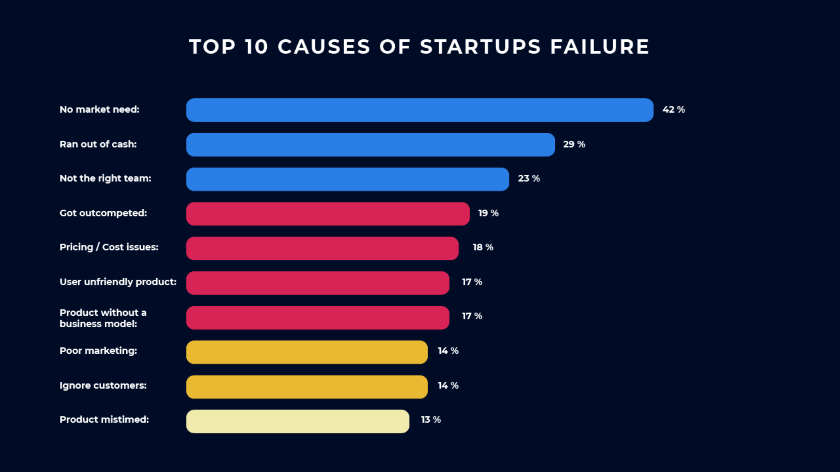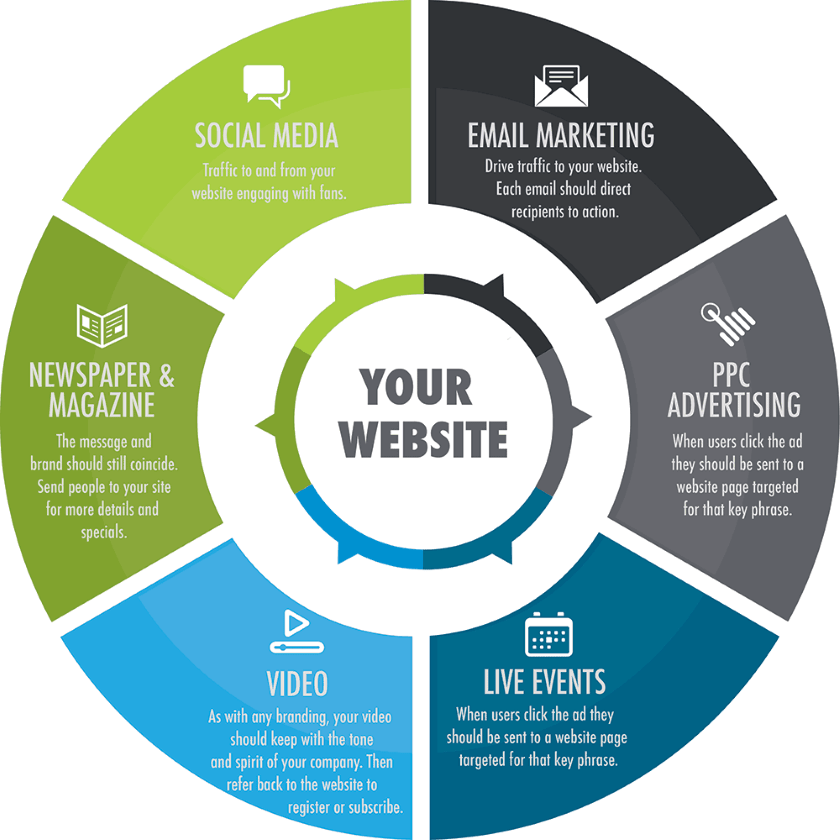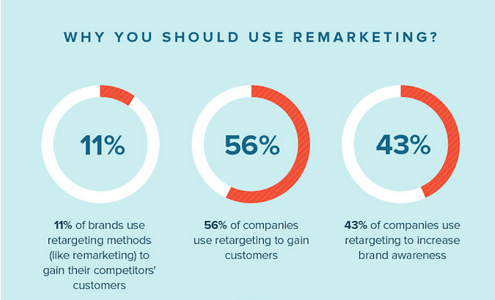
Retargeting & Remarketing – Why It’s Essential for Marketing Strategy
Wouldn’t it be perfect if doing business was that straightforward… Just hang up the sign on the door, customers would stroll right in, purchase your merchandise, and the money would magically start flowing in.
Sorry… things in real life don’t work like that. With most businesses transferring online, competition in the digital space is getting tougher. Bluecorona.com states that 20% of small businesses fail the first year, and 70% fail by the tenth year. On top of that, they are all fighting for the same customers.

What’s the solution?
Chewing the same gum of strategy, a thousand times, doesn’t bring results.
Digital marketers and online business owners need to identify and implement effective marketing strategies for their brands. And even though they do their very best to reel in as many customers as they can, attaining a 100% retention or conversion rate is not possible.
It’s always been about reaching the target audience. And you’ve already invested a considerable amount of capital into your marketing approach- SEO, content creation, social media campaign, and whatnot- not to mention the time and effort you’ve spent to get people to visit your website.
Unfortunately, the numbers aren’t impressive
According to thrivehive.com, 98% of the people that initially visit your website bounce right off. Considering all the hard work you’ve done to drive traffic to your site, how can you make them come back and convert into a sale?
There are several ways to draw them back. But more importantly, you need to devise a foolproof plan to steer back the attention of the 98% of the visitors that took off empty-handed the first time.
Remarketing and retargeting allow brands to reconnect with people who previously interacted with a website or mobile app. In order to maximize the value of those initial visits and convert the visitors, you will need to tap into the potential of remarketing and retargeting.
And though many assume they have adequate knowledge about the criteria, most businesses fall victim to routine, doing the same things over and over again, expecting different results. Therefore, employing the services of experienced digital marketing agencies can be a better route.
Explore all your options and find the right digital agency for your Google Ads. Work alongside a dedicated team of experts that strive to accelerate the growth of your business as well as align your retargeting and remarketing needs.
What’s remarketing and retargeting?
Though it may sound as if you’re starting all over again. Rather than focusing on first-time visitors, these practices endeavor to attract people who have visited or digitally interacted with a brand before.
Remarketing and retargeting permit businesses to reach those customers that are more likely to convert into sales or complete the desired action, such as subscribing, enrolling, downloading, etc. Moreover, it aims at amplifying current marketing strategies.
Remarketing vs. Retargeting: What’s the difference?
Every business wants to win the bounced traffic. Retargeting and remarketing efforts can help reach out to them. Since they have visited your site before, they’re the ones that are more likely to convert.
And though both words are often used interchangeably, remarketing and retargeting are not the same. However, both practices do have a common goal- to get previous visitors on the path to conversion.
But before we can pursue the topic further, it’s imperative to make each term clear.
- Remarketing reaches the audience that has already visited your site via email campaigns.
- Retargeting reaches the audience that has already visited your site or has shown an interest in a product similar to yours via paid advertising.
Both strategies are essential and useful because they focus and spend on people who are already familiar with a particular brand. Moreover, the consumers have already shown an interest in the brand or a similar product. Marketers who use these practices, over other ones, typically experience a higher ROI.
How can you use a remarketing strategy for your business?
Among the marketing tools that small businesses are currently utilizing, email, website, and social media are the most important.
According to bluecorona.com, 54% use email, 51% have a website, and 48% use social media.
This proves that emails are quite as productive as a marketing channel. SEO-specialist “Moz” reported that email remarketing conversions could reach up to 40%, mostly because they are targeted at the right person at the right time.
Examples of how emails can be used in a remarketing campaign are:
- Through newsletters
As a subscribed customer, you receive informational content regularly through newsletters. But often, the automated campaign includes the occasional promotional offer. And when these emails are more personalized with tactics such as a once-in-a-lifetime proposition, a letter from the CEO of the company, special discounts for loyal subscribers, etc., a person usually caves at some point and completes a transaction.
Optimizing emails with the target audience on a personal level helps connect with customers, boosting the remarketing campaign.
- Through abandoned carts reminders
Everyone has abandoned a shopping cart at least once! So emails (as part of an automated campaign) target these shoppers, reminding them politely about those forgotten items. Often the slightest nudge is enough to complete a transaction.
How can you use a retargeting strategy for your business?
Retargeting entails strategically positioning ads while people browse the web. It is designed to specifically target visitors who have clicked away from a website before converting with the use of cookie-based technology.
eMarketer quoted that 3 out of 5 people notice and consider ads showing products they viewed from another page. Retargeting campaigns perform 10 times better than regular display banners. Blog.spiralytics.com stated that website visitors who are retargeted with display ads are more likely to convert by 70%.
Cookies are text files that track a person’s behavior on a website. They’re often required to allow sites to function properly. They are placed for a variety of purposes, such as remembering a user’s preferences or the contents in an online shopping cart.
On the other hand, pixels are a small snippet of code that allows third parties to track user behavior. A retargeting pixel follows visitors and sends ad campaigns to them when they do not complete the required action, such as buying a product or registering for a course.
Pixels can transform a digital ad campaign, optimize the website, and encourage conversions.
How productive are your tactics?
There are several KPIs to review the effectiveness of an ad campaign. CTR, CPC, CPA, and conversion rate are often some of the most important ones. And it’s natural for website owners to be concerned about comparing conversion rates with others in the same industry.
Ad platforms, such as Google Adwords, allow business owners to track and analyze the success of their paid advertisements. The results of these ad campaigns can help determine if:
- The right target audience is being reached
- Adequate ad spend being allocated to each ad
Typically, a website that advertises on search engines, such as Google and Bing, or social media marketing platforms, such as Facebook, Twitter, and Instagram, embeds tracking codes in their website’s code. This enables site managers to keep track of the metrics as well as improve any shortcomings, especially when promoting events.
But analytics tools also place third-party cookies in the user’s browser. This helps to build a profile of every visitor based on their search history. With these vast databases, retargeting campaigns are more effective.
Which platforms allow you to use this strategy?
There are numerous retargeting platforms out there. But some of the more well-known ones are:
1. Google Adwords
It’s quite simple using Google remarketing through the myriad of options that the platform has to offer. Adding a pixel to your website facilitates the tracking process. Whenever a new user lands on your website, it will get immediately added to the remarketing audience list.
Moreover, the pixel code can be customized for different pages to supplement defined categories. For instance, specific potential customers can be selected for highly targeted display ads to intensify the marketing approach. But one of the best aspects that the platform offers is the ability to combine dynamic retargeting campaign with Ad gallery. It’s an easy and cheap way to produce text, image, and video ads.
A few ways to implement Adwords remarketing are:
- Standard remarketing
- Dynamic remarketing
- Customer list remarketing
- Video remarketing
2. Facebook Ads
This social media giant is a phenomenal trendsetter in the retargeting domain. Moreover, options on this platform can be applied to Facebook, Messenger, and Instagram. Therefore, its greatest benefit is the massive, active user base- over 1 billion.
Customer Audiences is an extension of Facebook Ads. It works by creating pixels that can be added to websites. This enables business owners to build their custom audience.
In the same way as Facebook remarketing, Instagram has a powerful approach, thanks to its 300 million users. And as the platform’s popularity continues to grow, so too will its retargeting strategy.
3. Twitter Ads
By installing a Twitter pixel onto a website, the brand can collect cookie IDs of all visitors. Through Twitter’s Tailored Audiences, marketers can utilize visitor engagement to target their remarketing solutions. The different techniques include:
- Lists – uses email addresses or Twitter usernames
- Web – targets people who use Twitter’s tag on a website
- Mobile apps – use data collected from a mobile app
Other remarketing/retargeting platforms can be beneficial for your business. But one aspect that cannot be overlooked is mobile retargeting. As mobile devices and digital technologies have become an integral part of our lives, marketers are increasingly focusing on effective retargeting methods that incorporate them.
So when mobile shopping or searching is interrupted while people are on the go, ads for a product that a person was recently browsing can be targeted at them to reignite user intent. With that in mind, allocating a dedicated budget for retargeting is essential. According to Chango, 68% of marketing agencies and 49% of brands are already doing that.
What are the benefits?
Applift.com has the numbers to blow you away. Retargeting produces 3 times more sessions per dollar, and it drives CTRs by 48%.
More interestingly, retargeted dormant users are 173% more likely to spend again. But in order to reap these benefits, you need to keep your campaigns fresh and dynamic. Identify which ads are performing and which ones aren’t. And the best way to go about doing that is using A/B testing.
A tailored digital business strategy with an intelligent online advertising approach has proven to be the core elements of success. Consider, for instance, how Elespacio helped Nespresso run their global campaign. And it’s not the first time that brands have employed digital agencies that were vital cornerstones of their prosperity.
To highlight just a few, here are some benefits of remarketing and retargeting that cannot be overlooked:
- Potential clients are reminded of their desire to purchase, encouraging them to come back to your website.
- Following up on newly found visitors with highly targeted ads makes business more profitable. Costs of investing in these techniques are lower than acquiring new users.
- The marketing campaign benefits the entire user base. KPIs of monetization, retention, and virality can be positively influenced.
- It’s an effective way to raise brand awareness, drive sales activity, and increase registrations.
- Your focus (time, money, and effort) is on those people that have already exhibited interest in your brand. This means that your ads are most likely on target, with more chances of boosting ROI.
- Businesses have more options to filter, modify, and personalize their performance to tailor ads for specific visitors and match their behaviors.
- Customers can find businesses promptly as they search on search engines. They are more likely to encounter the brand’s ads.
- Creating remarketing lists helps focus advertising efforts on unique customer sets. Moreover, you can reach a more extensive user base through remarketing lists as they browse through their mobile devices, whether they use an app or a website.
- You’ll have all the statistics at your fingertips. With regular reports, you know how campaigns are performing, where ads are being displayed, and how much they are costing.
Final thoughts
Remarketing and retargeting are powerful branding and conversion optimization tools. They work best as a part of a broader digital marketing strategy. For instance, content marketing, AdWords, and targeted displays are great for driving traffic to your website. But they won’t help convert.
Conversely, remarketing, and retargeting are ideal for conversion optimization, but they can’t drive people to your site. So your best bet is using a mix of strategies to approach customers, especially those that have deviated from the sales funnel. Not only does this increase brand awareness, but it also reminds this specific target audience to make a purchase.
More importantly, the right retargeting and a remarketing partner can help you implement an effective strategy based on campaign KPIs. When done well, it can become an elemental step in the consumer journey, delivering easy access to valuable products, services, or information. It’s time to get in touch with those non-converting visitors today.

























